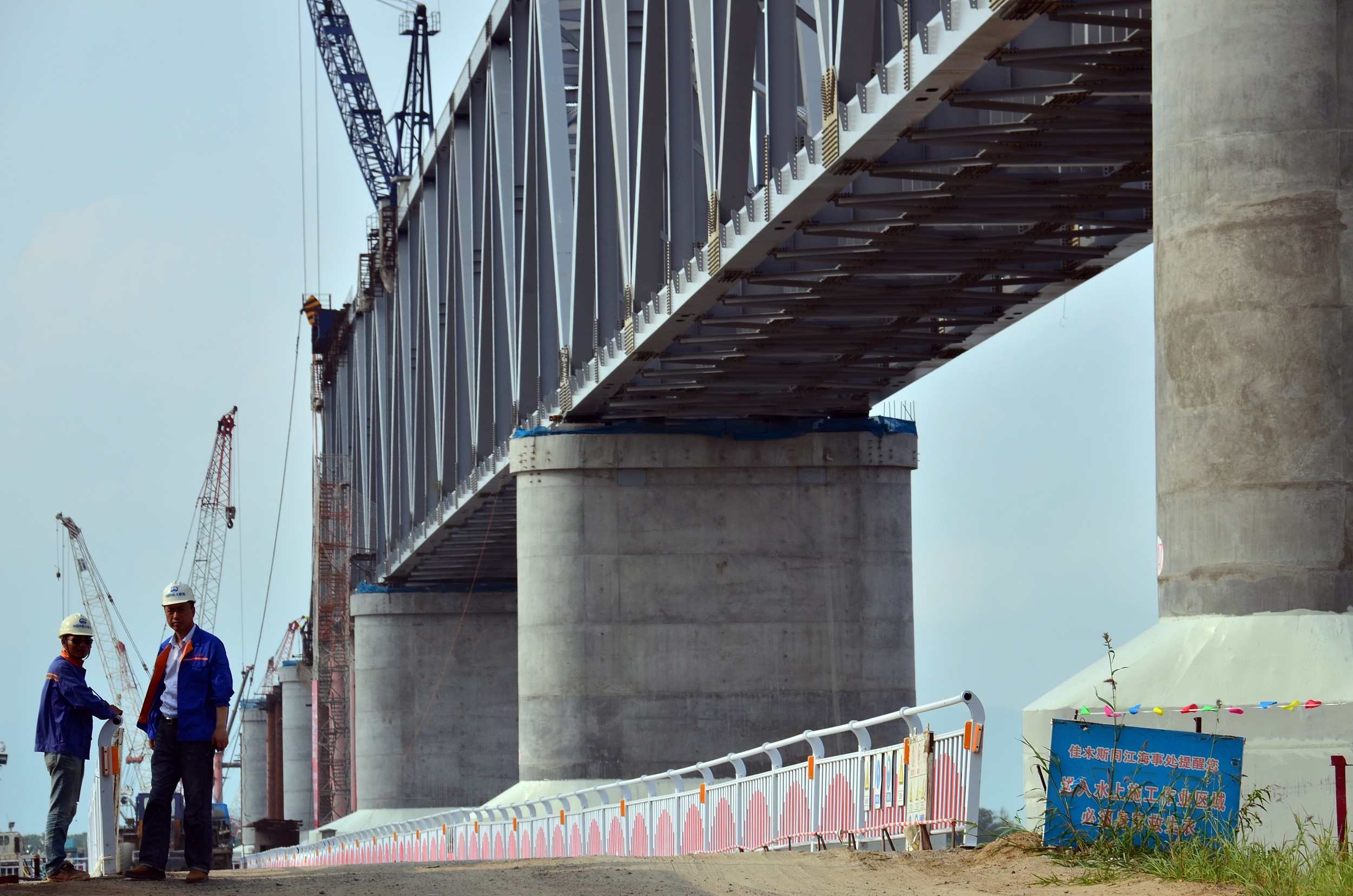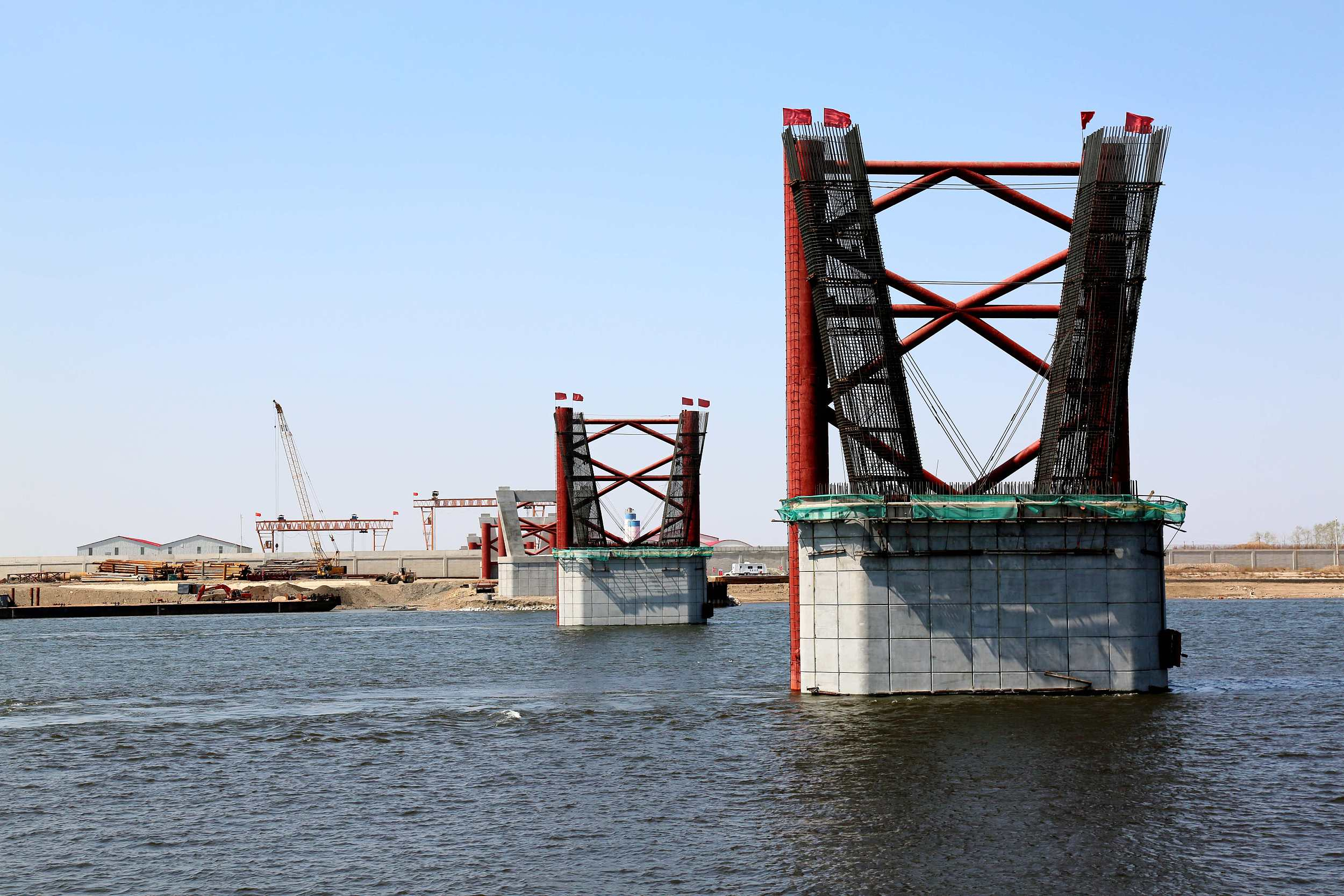
Business
10:37, 13-Jun-2018
China, Russia pledge stronger ties amid global trade turmoil
By CGTN’s Yang Jing

After being awarded China’s first Friendship Medal, Russian President Vladimir Putin and his Chinese counterpart Xi Jinping have moved towards closer economic cooperation at a time of deep fragmentation over trade protectionism in the West.
Beyond growing trade, the two neighboring countries are also cementing stronger regional development by upgrading transportation routes.
During Putin’s latest visit to China, which began on June 8, Russian Railways and the China Railway Corp signed a memorandum of understanding to establish high-speed freight railway routes linking China, Russia and Europe.
Russian Railways is working on a network of 9,000 kilometers of Eurasian freight routes that should be finished by 2036, Russian media Sputnik reported on the day of Putin’s arrival in Beijing.
The Eurasia project is designed to connect the network of China Railway Corporation with the Euro Carex, a high-speed freight network under construction in Europe, Sputnik reported in August last year.
The high-speed freight railway routes will play a key role in facilitating logistics, boosting trade and encouraging investment between China and Russia, He Zhenwei, secretary general of China Overseas Development Association, told CGTN on Tuesday.
The new routes will also further promote China’s high-speed railway technology in Russia, with the first high-speed link already under discussion, He said, referring to the two countries’ cooperation on high-speed rail connecting Moscow and Kazan.
In 2015, China Railway Group won a 2.4 billion yuan (367 million US dollars) contract to design the Moscow-Kazan project.
Moreover, the high-speed railway connection to Europe will help China meet the goal of increasing its imports, according to He.
During Putin’s visit, the Russia-China Investment Fund (RCIF) and China Chengtong Holdings Group signed an agreement to establish a joint one billion US dollar industrial investment fund, with a focus on the development of industrial, transport and tourism infrastructure in Russia, according to Reuters.
More cooperation expected in Russia’s Far East
The development of Russia’s Far East is vital for both countries, since it can align China’s Belt and Road Initiative with Russia’s Eurasian Economic Union strategy, He said.
Prior to signing the MoU on the Eurasia railway project, China and Russia have previously made attempts to construct cross-border transport links with plans for new rail bridges, although progress has been slow.
A rail bridge connecting Tongjiang in northeast China’s Heilongjiang Province with Nizhneleninskoye in Russia's Jewish Autonomous Oblast is expected to be the first bridge connecting China and Russia across their frontier along the Amur River.

Tongjiang- Nizhneleninskoye bridge under construction on August 5, 2015. /VCG Photo
Tongjiang- Nizhneleninskoye bridge under construction on August 5, 2015. /VCG Photo
Construction on the Amur International Rail Bridge or China-Russia Tongjiang Rail Bridge began in 2014, but came to a halt because of financing problems and construction delays by the Russian side.
The other cross-border bridge, linking Heilongjiang’s border town Heihe with the Russian city Blagoveshchensk, saw construction work begin in December 2016.

Heihe- Blagoveshchensk bridge under construction on May 9, 2018 /VCG Photo
Heihe- Blagoveshchensk bridge under construction on May 9, 2018 /VCG Photo
Both bridges are expected to open to traffic in 2019, according to media reports.
“I believe the two bridges will be completed in one or two years,” He said, noting that Russian security concerns over the bridges can be erased through communication, as well as Moscow’s decision to pivot towards the East amid Western sanctions.
Russia has set up advanced special economic zones with preferential policies encouraging investment and socio-economic development in its Far East region, a vast territory lying east of Lake Baikal.
Improved infrastructure in the Far East would boost opportunities for northeast China.
Smooth transportation links would grant China’s rust belt region big logistical advantages, with a new channel linking Asia to Europe other than the Malacca Strait, He said.
He said that cooperation emphasized at the 18th Shanghai Cooperation Organization summit and easing tensions on the Korean Peninsula are all positive signs for the development of Russia’s Far East.

SITEMAP
Copyright © 2018 CGTN. Beijing ICP prepared NO.16065310-3
Copyright © 2018 CGTN. Beijing ICP prepared NO.16065310-3